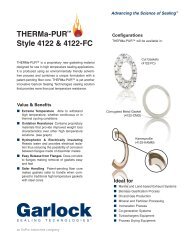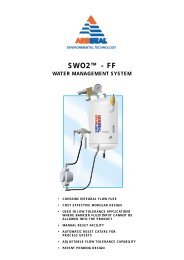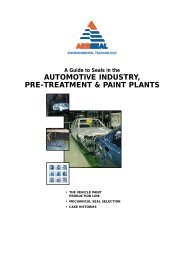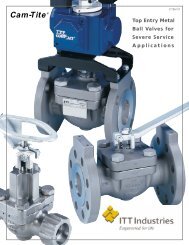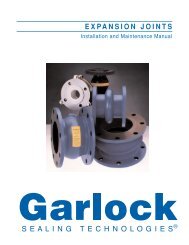PAPER RECYCLING PLANTS - AR Thomson Group
PAPER RECYCLING PLANTS - AR Thomson Group
PAPER RECYCLING PLANTS - AR Thomson Group
Create successful ePaper yourself
Turn your PDF publications into a flip-book with our unique Google optimized e-Paper software.
DE – INKING<br />
The Thin Stock still contains the ink which was chemically separated from the paper fibres in<br />
the pulper, it is now removed from the product in Flotation or Wash Cells.<br />
FLOTATION CELL<br />
The pre-screened pulp fibre and liquid is pumped through a series of Flotation Cells in which<br />
soap and fatty acids are added to react with the Calcium in the aqueous mixture.<br />
The reaction creates a surface “scum” .<br />
Air is introduced into the mixture (at the bottom of the cell) to promote the formulation of<br />
bubbles to which the ink particlulates become attached as the bubbles rise and expand.<br />
The scum turns into a black froth which is skimmed or overflows from the top of the cells.<br />
During the above process the individual fibres are dispersed to aid removal of the ink<br />
particles.<br />
The flotation cell is capable of removing ink particles from 5-500 microns (0.0002" to 0.020")<br />
WASH CELLS<br />
This is similar to the above process however the pulp is dispersed and washed without the<br />
aid of air and collected mechanically from the wash bath.<br />
SECOND<strong>AR</strong>Y SCREENING<br />
A second series of Hydrocyclones and Pressure Screens are employed to remove more of the<br />
smaller contaminants. The particulates removed are much smaller and therefore the screens<br />
have slots typically sized 0.003"(0.08mm) to 0.018" (0.45mm) wide.<br />
SECOND<strong>AR</strong>Y FILTRATION<br />
Many different methods exist for filtration of pulp fibre at this point e.g rotary vacuum filter,<br />
rotary disc filter etc.<br />
Both the above designs consist of a large horizontal cylinder which slowly rotates partially<br />
immersed in pulp fibre suspension. The filtration process normally involves 3 distinct phases:-<br />
1) Pick up of fibre onto the Filter Cloth from the liquid suspension.<br />
2) Drying of the fibre which collects on the Filter Cloth as the filter slowly rotates. Again the<br />
vacuum draws air past the fibre clinging to the Filter Cloth.<br />
3) Removal of the fibre using mechanical scrapers or more likely the modern approach of<br />
using water jets. During the removal process the vacuum is cut off.<br />
The pulp consistency into the filter is normally about 1% and outlet consistencies from 12 –<br />
15% are normal.<br />
© Copyright 2002 AESSEAL plc All Rights Reserved.<br />
RECCYCCLLEEDD PAAPEER<br />
AESSEAL®<br />
<strong>PAPER</strong> <strong>RECYCLING</strong><br />
<strong>PLANTS</strong><br />
L-UK/US-RECYCLE-03<br />
IN 4540 - 01/2002<br />
13



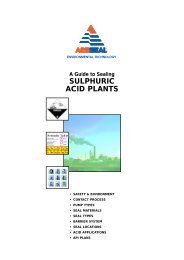
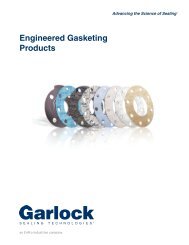
![VCS Flange Gasket [1.03 MB] - AR Thomson Group](https://img.yumpu.com/12044617/1/190x245/vcs-flange-gasket-103-mb-ar-thomson-group.jpg?quality=85)

![PGE Flange Gasket Product Brochure [1.04 MB] - AR Thomson Group](https://img.yumpu.com/12044595/1/190x245/pge-flange-gasket-product-brochure-104-mb-ar-thomson-group.jpg?quality=85)
